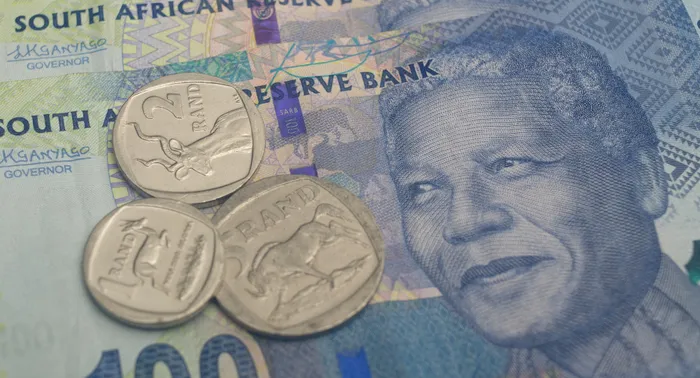South Africa’s economy stagnates with mere 0.1% GDP growth in Q1, raising concerns

South Africa’s economy narrowly escaped contraction in quarter one 2025, with gross domestic product (GDP) growing by a mere 0.1%, down from 0.4% in quarter four 2024, according to Statistics SA/
Image: Picture: Henk Kruger/Independent Newspapers
South Africa’s economy narrowly escaped contraction in quarter one 2025, with gross domestic product (GDP) growing by a mere 0.1%, down from 0.4% in quarter four 2024, according to Statistics SA
Experts were united in their concerned about stagnation in the economy.
Maarten Ackerman, the chief Economist and Advisory Partner at Citadel, said the figures are "not something to celebrate,” as the country remains in a prolonged per capita recession, with full-year growth at just 0.8%.
Agriculture, forestry and fishing industry increased by 15.8%, contributing 0.4 of a percentage point to the positive GDP growth. This was primarily due to increased economic activities reported for horticulture and animal products. The transport, storage and communication industry increased by 2.4%, contributing 0.2 of a percentage point. Increased economic activities were reported for land transport, air transport and transport support services.
Stats SA said the finance, real estate and business services industry increased by 0.2%, contributing 0.1 of a percentage point. Increased economic activities were reported for retail trade, motor trade, accommodation and food and beverages. The manufacturing industry decreased by 2.0%, contributing -0.2 of a percentage point. Seven of the ten manufacturing divisions reported negative growth rates.
The largest negative contributions were reported for the petroleum, chemical products, rubber and plastic products; food and beverages; and motor vehicles, parts and accessories and other transport equipment divisions.
Mark Phillips, the head of Portfolio Management and Analytics at PPS Investments, warns that despite agriculture’s impressive 15.8% surge, the economy is showing signs of serious strain. Manufacturing is down. Mining is struggling. Fixed investment has dropped.
He said, big questions now loom: Is this a fragile win or a warning sign? How much longer can South Africa keep the lights on – economically and literally?
This as global risks are intensifying, domestic investment is weakening, and the economy remains vulnerable to another round of load-shedding or global demand shocks.
Professor Raymond Parsons, NWU Business School economist, said the disappointing GDP growth figure of 0.1% for the first quarter of 2025 comes as no surprise. “Although adverse global developments earlier this year have also played a role, the weaker economic data was already apparent before then. For example, the Absa Purchasing Managers’ Index for May, although showing some recent signs of business activity and demand improvement, has remained in contractionary territory for seven consecutive months.”
Parsons said the key manufacturing sector is likely to continue to be a lagging one for now. “This reality was already recently also presaged by several reduced growth forecasts for 2025, including by the National Treasury (1.9% to 1.4%) and the SARB (SA Reserve Bank)(1.7% to 1.2%). If present trends persist, the growth outlook for this year now seems likely to be only about 1%, possibly rising to about 1.5% in 2026. It is clear that the incipient economic recovery in SA is presently struggling to gain momentum and needs maximum support to strengthen the business cycle upturn," he said.
Waldo Krugell, an economics professor at the North-West University (NWU), pointed to the fact economists were expecting weak GDP data as high frequency indicators like PMIs and monthly manufacturing and mining stats pointed to a slowdown.
“The fact that agriculture, which is a small part of GDP, is again such a swing factor, though to the positive side, shows that there is very little growth happening elsewhere. On the expenditure side it is households driving the little bit of growth that we see. They were spending on transport (those Q1 new vehicle sales showing up), food and beverages, restaurants and hotels, and health,” he said.
Krugell added that what is really worrying is the contraction of investment spending. “International uncertainty did play a role, but we did have exports contributing to growth in Q1. I think the loss of Government of National Unity (GNU) reform momentum played a bigger role.”
Call for policy coordination
Meanwhile, Dr Eliphas Ndou, an economist and author at Unisa's Department of Economics, said the weak economic growth rate points to an urgent need for policy coordination to raise economic growth. “The weaker growth implies the economy will be creating jobs at a faster pace leading to persistently high unemployment rate, and also this means elevated gross loan debt to GDP ratio, which National Treasury should deal with through spending reductions. It is ideal that in such periods of elevated policy and trade uncertainty that slow economic growth to implement policies that raise economic agents’ optimism,” Ndou said.
Ndou added that the slowdown in consumption contributions from 0.7 in the last quarter of 2024 to 0.2 in the first quarter of 2025 is consistent with deterioration in FNB/BER consumer confidence index which declined from -6 index points to -20 index points over the same periods.
Wandile Sihlobo, the chief economist at Agricultural Business Chamber of South Africa, highlighted that South Africa's agriculture sector is in recovery mode, although the recovery is uneven, as some subsectors, mainly livestock, are facing challenges that will become apparent later in the year.
“The data released this morning by Statistics South Africa shows that South Africa's agricultural gross value added expanded by 15.8% quarter-on-quarter (seasonally adjusted) in the first quarter of 2025. This expansion is primarily due to the improved performance of certain field crops and the horticulture subsectors,” he said.
Sihlobo added that the better performance of these particular subsectors is expected to continue dominating the year.
BUSINESS REPORT
https://businessreport.co.za/